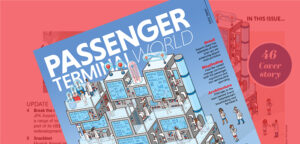Emerging technological, societal and traveler trends have significantly altered the travel landscape over the last few years.
Megatrend 1 – The rise of AI
New data from SITA’s 2023 Air Transport IT Insightsreport shows that 86% of airlines are collaborating with innovation partners to make advancements in AI, machine learning (ML) and computer vision. Thirty-nine percent of these have already been implemented, while another 47% confirmed plans to have such systems implemented by the end of 2026. Only 14% of airlines said they had no plans to invest in AI technologies. In comparison, 97% confirmed major programs and R&D within the next three years. Looking at airports, 16% already use AI and ML for improved decision making, with another 51% confirming plans to implement such solutions by the end of 2026.
“Younger travelers demand a more integrated digital journey, and the industry will be forced to respond.”
Sergio Colella, president of SITA Europe
Megatrend 2 – Generation-based travel solutions

Younger travelers demand a more integrated digital journey, and the industry will be forced to respond. Digital identities, border crossings and mobile platforms offer ample opportunities for younger travelers who are familiar with using their cellphones as one-stop shops for travel. Market share for solutions of this kind will increase as digital natives become a more significant proportion of the passenger demographic, creating a seismic shift toward ‘digital first’.

On the flip side, this increased focus on the digitalization of travel may cause issues for older generations. Airports should look to offer bespoke technological solutions and bolstered staff resources dedicated to supporting aging travelers. Placing a focus on passenger processing solutions, airport experiences and end-to-end reliable customer support services will aid them during their journeys and encourage them to use the integrated digital travel solutions that are set to take over the industry. If this generation receives support, then all travelers will easily adjust to and use new travel technology.

Megatrend 3 – UAM’s rapid evolution
Increased demand for short-range routes, advances in batteries and electric propulsion systems, and the increasing efforts to reduce aviation’s carbon footprint and operational costs have all contributed to the impressive growth of the urban air mobility (UAM) transportation sector in 2023. Taking to the air rather than the road may soon be possible in Paris: an electric air taxi service is in the pipeline and could be launched during the 2024 Olympic Games.
Airlines are showing increased interest in UAM, with 30% confirming major programs and R&D in UAM services and infrastructure. Thirty-three percent of airlines are investing in vertical take-off and landing (VTOL) integration technologies for airline operations. Furthermore, 35% of airports confirmed major programs and R&D plans for integration with intermodal transportation systems for data sharing, with 23% investing in technologies for VTOL integration.
Megatrend 4 – Automation will fill gaps left by the pandemic
With the pandemic having left so many gaps in staffing, operations and efficiency, airports and airlines will have to use technology to restructure their workforces to work differently. Automation will allow operations to be scaled, enabling a more agile workforce, with employee value shifting to highly skilled, empowered decision makers and service-oriented roles. Peaks and troughs of work will be addressed through digitalization.
This article originally appeared in the April 2024 issue of Passenger Terminal World. To view the magazine in full, click here.


